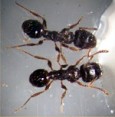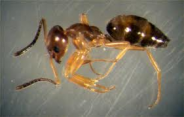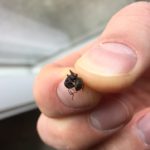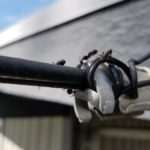Small Tiny Little black Kitchen Bathroom House ants- exterminator- Sugar ants Ants control service Bellevue,Kirkland,Redmond,Issaquah,Mercer island,Samammish,Renton,Medina,Woodinville,Bothell
4256917775
Ants, like all insects, have jointed legs, three body parts (the head, thorax and abdomen), a pair of antennae, and a hard exoskeleton. The exoskeleton is made up of a material that is very similar to our fingernails. Ants range in color from yellow to brown to red to black.
Common Identification Ant pictures that frequent your home and businesses click on the pictures for more information
The life cycle of the ant consists of four stages: egg, larva, pupa, and adult. Fertilized eggs produce female ants (queens, workers, or soldiers); unfertilized eggs produce male ants.
Carpenter Ants spray Kill Control Remove Pictures
Ants control removal service
Ants that live outside will travel inside the home to search for food. Some species may ultimately reside in houses, discussed later in this fact sheet. To prevent both of these scenarios, follow these procedures:
The Small tiny little black kitchen sugar ants often discovered foraging in your kitchen are often lumped together under the name “sugar ant.” And while it’s true that sweet, … The common household ants infesting in your kitchen likely belong to one of four species of tiny ant: the little black ant .Killing Ants in the building with Chemicals Spot control is the best method for killing ants. They tend to concentrate in a small area and spot application isolates the chemical zone and minimizes damage to beneficial insects who also call the grass home. Ants treatments include bait, spray or granular form. Locate the nest and apply the chemical as indicated on the label. Granular forms require activation with water, so it is best to irrigate after applying the chemical. In all cases, wait until a treated area has dried before allowing children and pets into the toxic zone. Ants can be a blessing and a curse, so consider the severity of the problem before resorting to chemical treatments. Their activity is also a natural pest control and can increase the tilth of soil, acting as wild aerators to loosen the dirt around roots and enhance growth.
Pest Control & Removal of sugar Ants
Pests, such as pavement ants, are attracted to moisture. To prevent black pavement ants, eliminate standing water around the home. Keep tree branches and other plants cut back from the house. Sometimes pavement ants use these branches to get into your home. Make sure that there are no cracks or little openings around your house. Ensure firewood and building materials are not stored next to your home because pavement ants like to build nests in stacks of wood. Indoors, clean up spills and crumbs on counter tops and kitchen floors.
Pavement Little black sugar ants are one of the most common species in the U.S. So common, in fact, they are often not viewed as much of a nuisance…until they decide to invade your outdoor picnic. Pavement ants earned their name due to their tendency to burrow under sidewalks, driveways and building slabs, piling the resulting dirt in mounds on top of the pavement.
An introduced, soil-nesting species of ants, it is widely believed that pavement ants were transported to the U.S. in the holds of European merchant vessels during the 1700s to 1800s. The ships were filled with soil to provide weight on the overseas voyage. Once in port, the soil (along with the uninvited and unwelcome ants) was removed, and replaced with goods to carry back across the Atlantic.
What do pavement little black sugar ants eat?
The diet of pavement ants includes a wide range of different food sources, as the insects are known for eating virtually anything available. Pavement ants feed on subterranean termites and other soil-dwelling insects, nuts and seeds, bread, meats, grease, and sweets like honey and sugar. The indiscriminate insects travel as far as 30 feet from the nest to forage and leave a chemical trail that leads other members of the colony to the food source.
Sugar Ants Reproduction
Like many other ant species prevalent in New England, pavement ants produce winged males and females that emerge in the spring to mate. Also known as swarmers, the winged ants are exclusively responsible for reproducing and creating new colonies. After mating, winged females look for a suitable place to lay eggs and establish a colony. The newly mated queens typically lay the eggs in soil protected by pavement, concrete, or rocks. Pavement ants generally take about two or three months to complete all stages of development (egg to larva to pupa to adult). While reproductive swarming naturally occurs in the spring, colonies living in/under heated indoor spaces may produce swarmers and mate at any time throughout the year. The life expectancy of a typical adult worker pavement ant is several years.
Problems Caused by Pavement Sugar Ants
While pavement ants are not known to cause structural damage or major health problems, the ease and frequency with which the insects enter homes in New England can become a nuisance to area residents. Because of their willingness to eat almost anything, pavement ants can contaminate and ruin a variety of pantry staples and other food items when foraging. The chemical trails created by foraging pavement ants enable the rest of the colony to locate the food source, resulting in the emergence of unsightly hordes/trails of ants and causing further contamination. Throughout the year, indoor nests of pavement ants can produce winged reproductives that swarm by windows and other light sources, creating an unwelcome sight and potentially forming new colonies in or in areas around a structure.
Signs of Little Black Tiny Small Sugar Ants Infestation
The presence of foraging workers or reproductive swarmers flying around or inside is a strong indicator of a pavement ant infestation, especially during colder months. Small piles of soil particles that look like sand also indicate the existence of a pavement ant colony, as the insects push dirt and debris out the entrance of the nest as they construct or expand the underground colony. The piles are commonly found straddling cracks in the floor/foundation or driveway/sidewalk.
Little Black Sugar Ants Prevention Service
Because pavement little black sugar ants often live beneath the foundation of a house, homeowners need to make sure that all external cracks and other small openings are tightly sealed. Residents should also keep potential nesting sites, like piles of leaves and wood, safely away from the house. Kitchen areas within the home should remain free of crumbs, grease, and standing water. Homeowners also need to store food items in sealed canisters, rinse out food and beverage containers before throwing them away, and take the trash out on a regular basis. If an infestation problem arises, contact a pest control specialist with the ability to identify the ant species and implement an effective course of action.[embedyt] http://www.youtube.com/watch?v=AGRCY3t4Lto[/embedyt]
Benefits of Professional Ant Pest Control/How to Get Rid of Ants:Exclusionary measures are the best treatment for ants whose nests are located outdoors. Sealing all cracks and crevices with caulk will eliminate the entrances used by foragers, keeping them outside. A vigorous application of rubbing alcohol will also remove any remnants of the ant’s pheromone trails, and further foraging can be discouraged by promptly storing or disposing of greasy and sweet foods.
[embedyt] http://www.youtube.com/watch?v=8gsEPJ_JlBA[/embedyt]
Nests that are either inside the home or in other problematic locations can be treated using baiting systems. These pesticides should be used with care, away from children and pets; they deliver a slow acting poison to foraging ants, which when returned to the nest, spreads throughout the colony and will eventually exterminate all ants.
Ants Control Removal Kill Spray management professional has the education, equipment and skills necessary to effectively address a ant problem. Finding and treating the ant colony can be challenging, especially if the main colony is hidden somewhere outside in the lawn. A pest management professional provides their expertise to identify and determine the best possible solution to resolve the ant infestation.






